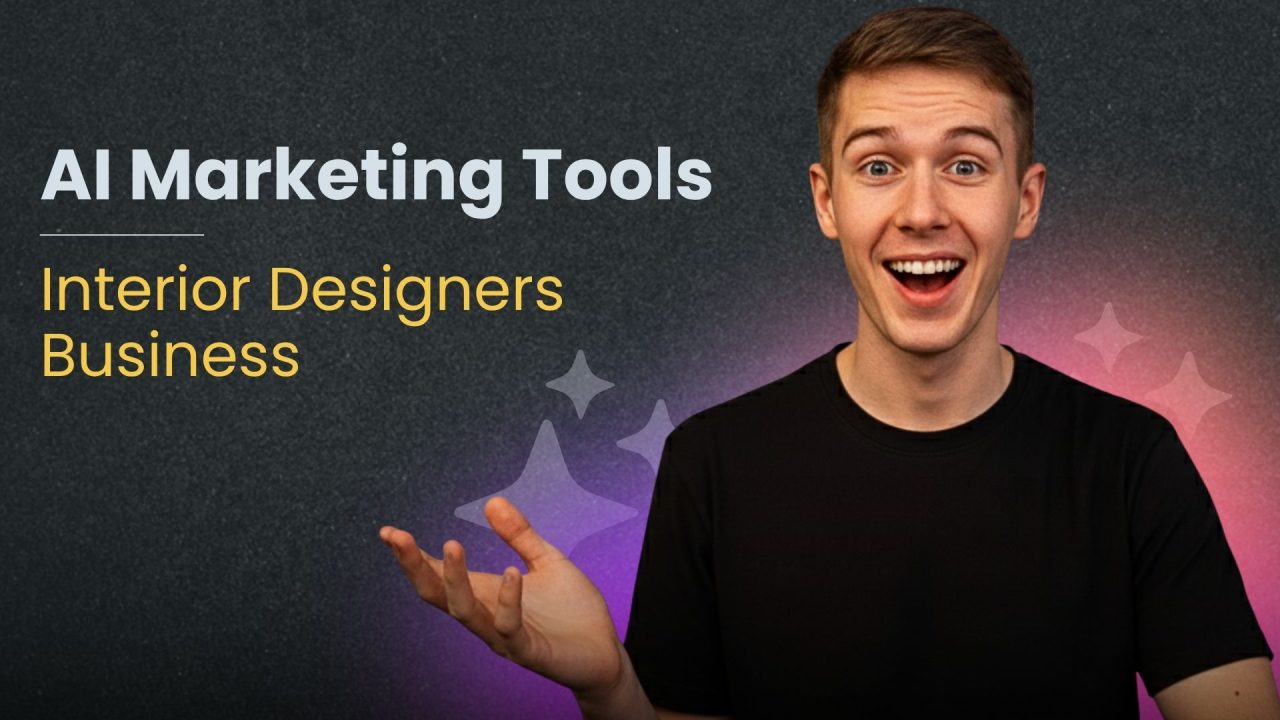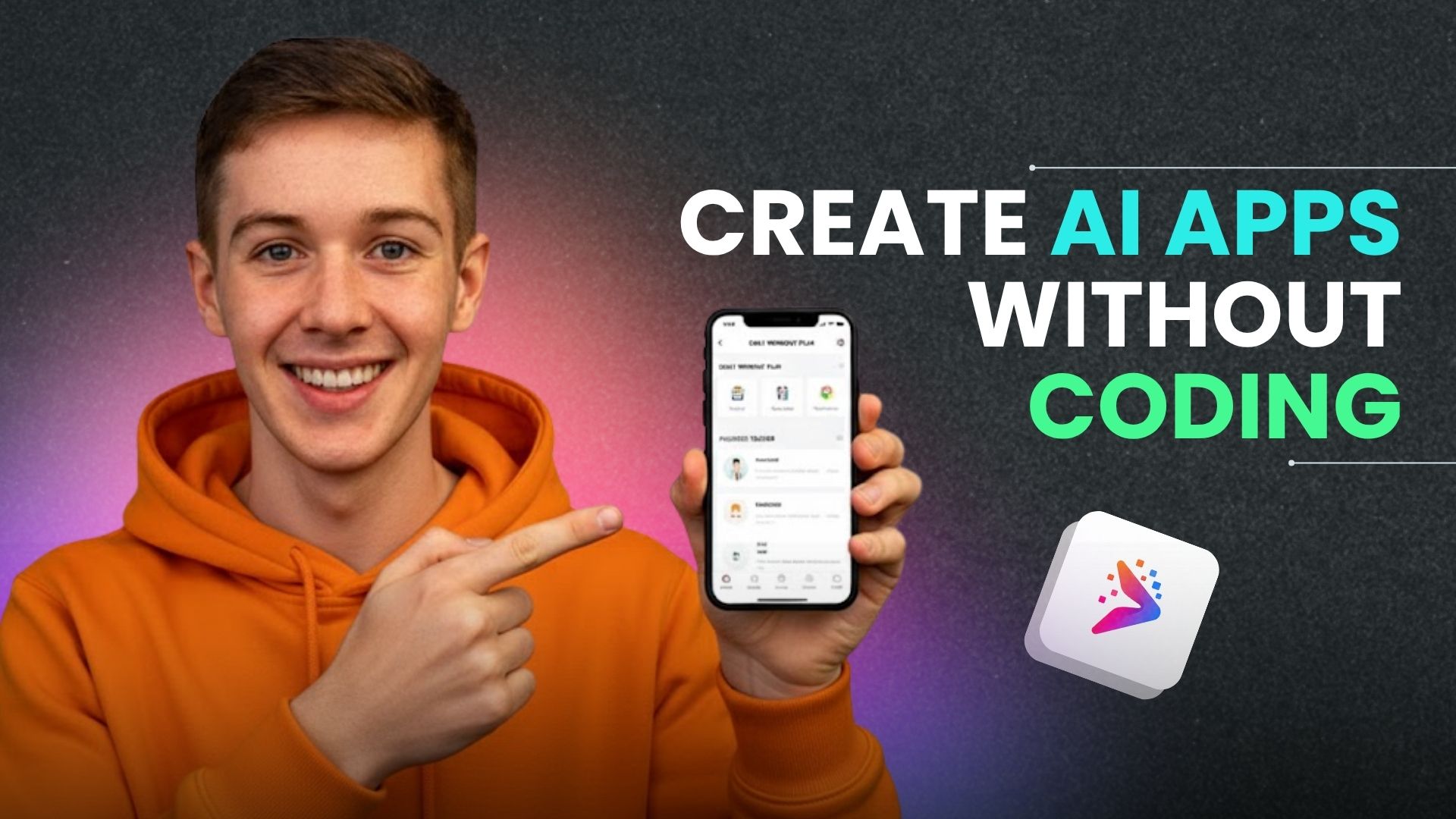The interior design industry, a realm where creativity meets functionality, is undergoing a profound transformation. While the core of design remains inherently human, the methods by which designers attract clients, showcase their work, and manage their businesses are rapidly evolving thanks to Artificial Intelligence (AI). AI marketing tools aren’t just buzzwords; they are powerful allies, empowering interior designers to navigate a competitive landscape with unprecedented efficiency and impact. From personalized content creation to breathtaking visual mockups, AI is reshaping how designers connect with their audience and close deals.
This guide will serve as your authoritative, practical, and forward-thinking roadmap to leveraging AI to grow your interior design business. We’ll explore how these intelligent tools can enhance every facet of your marketing efforts, positioning you as an innovator in the field and freeing up your valuable time to focus on what you do best: creating beautiful spaces.
Launch Your App Today
Ready to launch? Skip the tech stress. Describe, Build, Launch in three simple steps.
BuildGenerating Leads Through Personalized Content Creation
In today’s digital-first world, content is king, and personalization is its crown jewel. AI tools excel at understanding audience preferences and generating tailored content at scale, making them indispensable for lead generation. For interior designers, this means creating engaging narratives around your projects, expertise, and unique style that resonate deeply with potential clients.
Crafting Engaging Marketing Copy with AI
Tools like ChatGPT and Jasper AI are your virtual copywriting assistants, capable of producing a vast array of marketing materials in minutes. Forget staring at a blank screen; these platforms can kickstart your content strategy across multiple channels:
- Social Media Captions: Provide a few details about a recent project, a design tip, or a behind-the-scenes moment, and AI can generate multiple caption options, complete with relevant emojis and calls to action. It can even suggest trending hashtags specific to interior design, helping you expand your reach.
- SEO-Optimized Blog Outlines and Content: To attract clients searching for design inspiration or solutions, your website needs to rank high on search engines. AI can generate blog post outlines on topics like “Modern Minimalist Living Room Ideas” or “Choosing the Right Color Palette for Small Spaces.” It can even draft full articles, incorporating keywords that potential clients are actively searching for. Remember, while AI can generate the text, your expert review and unique voice are crucial for authenticity and authority. For more on maximizing your online visibility, explore our guide on generative SEO for startups.
- Client Proposals and Presentations: Beyond public-facing content, AI can assist in crafting persuasive client proposals. Input project details, client preferences, and your unique selling propositions, and AI can help structure compelling narratives, highlight benefits, and even suggest language that reinforces your expertise and vision.
- Email Marketing Campaigns: From welcome sequences to newsletters showcasing your latest projects, AI can draft engaging email copy that nurtures leads and keeps your brand top-of-mind.
Specialist Tip: Mastering Prompt Engineering
The secret to unlocking AI’s full potential lies in effective prompt engineering. Think of it as giving precise instructions to a highly intelligent, but literal, assistant. To get the best results, you need to be specific about your brand’s style and your target demographic.
Example Prompt: “Generate 5 Instagram caption ideas for a luxury residential interior design project. The client is a young, affluent professional in their 30s-40s who values sustainable, minimalist design. The captions should evoke feelings of serenity, sophistication, and modern elegance. Include 3-5 relevant hashtags. Brand tone: approachable luxury.”
By specifying elements like “luxury residential,” “young, affluent professional,” “sustainable, minimalist design,” “serenity, sophistication, modern elegance,” and “approachable luxury,” you guide the AI to produce highly relevant and effective content. For a deeper dive into crafting effective prompts, consider our expert guide on prompt engineering.
Closing the Deal with Powerful Visuals

Interior design is inherently visual. While your expertise and professionalism are paramount, stunning interior design visuals are often the first point of connection with a potential client. AI image generators are revolutionizing how designers create and present visual concepts, making it easier than ever to close deals.
AI Image Generators: Your Virtual Design Studio
Tools like Midjourney, Gemini, and Canva AI are no longer just for digital artists. They are powerful assets for interior designers to create captivating visuals without needing advanced rendering software or extensive photography sessions:
- Stunning Mockups: Imagine a client struggling to visualize a concept. With AI, you can generate multiple mockups of a room with different furniture arrangements, color schemes, or material palettes in minutes. Provide a base image of a room and a prompt like “modern farmhouse living room with a cream sofa, natural wood accents, and a large abstract painting.” The AI will render a visual representation, helping clients see their dream space come to life before any physical work begins.
- Dynamic Mood Boards: Traditional mood boards are fantastic, but AI can elevate them. Instead of static images, you can create cohesive digital mood boards that visually communicate the overall aesthetic, complete with textures, lighting, and stylistic elements. These can be easily shared and iterated upon based on client feedback.
- Transforming Static Renderings into Social Media-Ready Videos: A high-quality rendering is excellent, but a short, engaging video can make a much bigger splash on social media. AI video generation tools can take your static images or 3D renderings and add subtle animations, transitions, and even background music, transforming them into dynamic content perfect for Instagram Reels, TikTok, or YouTube Shorts. This is a game-changer for showcasing your portfolio in an engaging, modern format. Discover how to effortlessly create stunning videos with AI.
- Personalized Room Styles: A client might like “modern,” but what does that mean to them? AI can generate variations of “modern” – minimalist modern, industrial modern, mid-century modern – giving clients a visual vocabulary to articulate their preferences more clearly. This reduces miscommunication and accelerates the design process.
These tools allow you to rapidly prototype ideas, present concepts more vividly, and ultimately, help clients fall in love with their future spaces, making the decision to hire you an easy one.
The Business Side of AI Marketing: Efficiency and Foresight
Marketing isn’t just about creative output; it’s also about strategic management and staying ahead of the curve. AI tools extend their utility to the operational aspects of your interior design business, ensuring efficiency and informed decision-making.
Streamlining Client Relationships with AI-Powered CRM
Managing leads, client communications, and project timelines can be daunting. AI-powered Customer Relationship Management (CRM) systems, like those with integrated AI features in HubSpot, can transform how you handle your client pipeline:
- Lead Scoring and Prioritization: AI can analyze lead behavior (website visits, email opens, content downloads) and assign scores, helping you identify and prioritize the most promising prospects. This ensures your sales efforts are focused where they matter most.
- Automated Follow-ups: Set up AI-driven email sequences for new inquiries, project updates, or post-project feedback. This ensures consistent communication without manual effort, nurturing relationships and enhancing client satisfaction. For more on automating your email marketing, check out our guide on automating email marketing with Zapier and ChatGPT.
- Personalized Communication: AI can analyze past interactions and client preferences to suggest personalized responses or content, making every client feel uniquely valued.
- Project Management Integration: Many AI CRMs integrate with project management tools, providing a holistic view of client interactions alongside project progress.
Boosting Website Visibility with SEO Tools
Being found online is non-negotiable. Tools like Surfer SEO leverage AI to analyze top-ranking content for your target keywords, providing data-driven recommendations to optimize your website content. This includes suggestions for keyword density, content length, heading structure, and even internal linking opportunities. By following these AI-driven insights, you can significantly improve your search engine rankings and attract more organic traffic – clients actively searching for interior design services.
AI for Crucial Trend Forecasting
Interior design is heavily influenced by trends in colors, materials, styles, and technology. Staying current is vital for maintaining relevance and offering cutting-edge solutions. AI can be an invaluable asset for trend forecasting:
- Market Research: AI tools can analyze vast amounts of data from social media, design blogs, retail sales, and fashion trends to identify emerging patterns. This could include predicting the next popular color palette, furniture style, or sustainable material.
- Content Strategy Alignment: Armed with trend insights, you can proactively create content that addresses these emerging interests, positioning your brand as a thought leader. Imagine publishing an article on “The Top 5 Sustainable Materials for 2025 Interiors” just as the trend gains momentum.
- Design Inspiration: AI can even analyze current designs and suggest novel combinations or adaptations based on forecasted trends, sparking new creative directions for your projects.
By integrating these AI-powered business tools, you not only streamline your marketing operations but also gain a strategic advantage through data-driven insights and foresight.
The Specialist’s View: AI as an Assistant, Not a Replacement
As powerful as AI marketing tools are, it’s crucial for interior designers to understand their role: AI is a highly sophisticated assistant, not a replacement for human intuition, creativity, and empathy. The fear that AI will “take over” design jobs is understandable, but ultimately misplaced when viewed through the lens of a true expert.
Clients hire interior designers not just for their ability to select finishes or arrange furniture, but for their unique aesthetic vision, their ability to understand and interpret unspoken desires, their emotional intelligence, and their capacity to create spaces that truly feel like home. These are inherently human qualities that AI, with all its computational prowess, simply cannot replicate.
- Human Intuition: AI can analyze data to suggest popular color schemes, but it cannot intuit the subtle emotional connection a client has to a particular shade from their childhood, or understand the nuanced feeling they want their “sanctuary” to evoke.
- Empathy and Understanding: A designer builds rapport, listens actively, and empathizes with a client’s lifestyle, budget constraints, and aspirations. AI can process stated requirements, but it lacks the capacity for genuine human connection that forms the bedrock of a successful client relationship.
- Creative Problem-Solving: While AI can generate design variations, true creative problem-solving in design often involves navigating unexpected challenges, adapting to site-specific quirks, and finding innovative solutions that balance aesthetics, functionality, and budget – a process that demands human ingenuity.
- The “Why” Behind the “What”: AI can tell you “what” is trending or “what” elements fit a style. A human designer understands the “why” – why a particular trend resonates with a client’s lifestyle, why certain elements create a desired mood, or why a specific layout improves daily living.
Importance of Ethics and Data Privacy
As you embrace AI tools, it’s also paramount to consider ethics and data privacy. Ensure that any client data you input into AI platforms is anonymized or used with explicit consent. Be transparent with clients about how you use technology to enhance their design experience. Reputable AI tools typically adhere to strict privacy policies, but understanding these is your responsibility as a business owner. This is particularly relevant in the broader context of ethical AI practices.
Ultimately, AI empowers interior designers to be more productive, more visible, and more creative by offloading repetitive tasks and generating insights. It allows you to spend less time on administrative burdens and more time on the high-value, human-centric aspects of your profession – the very reasons clients seek you out. Think of AI as your smartest intern, handling the heavy lifting so you can focus on the artistry and client relationships that define your brand.
Conclusion: Design Your Future with AI
The integration of AI marketing tools into your interior design business isn’t just about keeping up with technology; it’s about strategically positioning yourself for future success. By leveraging AI for lead generation through personalized content, closing deals with powerful visual mockups and dynamic presentations, and streamlining your business operations with intelligent efficiency tools, you unlock significant growth potential.
AI is not here to replace the designer’s touch, but to augment it, providing you with superpowers to manage, market, and manifest your creative vision more effectively than ever before. Embrace these tools as sophisticated assistants, allowing you to dedicate more time to the artistry, client relationships, and unique human intuition that truly sets your interior design business apart.
Launch Your App Today
Ready to launch? Skip the tech stress. Describe, Build, Launch in three simple steps.
Build




